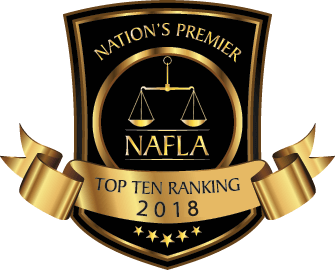In order for States to receive Federal payments
for foster care and adoption assistance, Federal
law under title IV-E of the Social Security Act
requires that they “consider giving preference to
an adult relative over a nonrelated caregiver when
determining placement for a child, provided that
the relative caregiver meets all relevant State child
protection standards.”1 Title IV-E further requires
States to exercise due diligence to identify and
provide notice to all grandparents and other adult
relatives of the child (including any other adult
relatives suggested by the parents) regarding (1)
the fact that the child has been or is being removed from the
custody of his or her parents, (2) the options the relative has to
participate in the care and placement of the child, and (3) the
requirements to become a foster parent to the child.2
Each State defines “relative” differently, including relatives
by blood, marriage, or adoption ranging from the first to
the fifth degree. Generally, preference is given to the child’s
grandparents, followed by aunts, uncles, adult siblings, and
cousins. For Indian children, nine States allow members of the
child’s Tribe to be considered “extended family members” for
placement purposes.3
Approximately 45 Statesand Puerto Rico give preference or
priority to relative placements in their statutes.4 Massachusetts,
Ohio, Wyoming, and the District of Columbia require childplacing
agencies to give preference to placements with relatives
in regulation. In 17 States and Guam, State agencies are
required to make reasonable efforts to identify and locate a
child’s relative when out-of-home placement is needed.5 New
Hampshire, American Samoa, Guam, and the U.S. Virgin Islands
use statutory language such as “may consider” placement with
relatives. West Virginia and the Northern Mariana Islands do not
address the issue of the placement of children for foster care
with relatives in their statutes.
In all cases, before a child can be placed in the home of a
relative, the child-placing agency must do an assessment to
determine that the relative is “fit and willing” to provide asuitable placement for the child, able to ensure the child’s safety,
and able to meet the child’s needs. Approximately 28 States and
the District of Columbia require relatives to undergo a criminal
background check that may include all adult members of the
household.6 Placement Options
In 18 States, American Samoa, and the Virgin Islands, the court
may transfer legal custody of the child to the relative as an
alternative to a foster care placement.7 In the remaining States,
custody is given to the State social services department, and
the department then assumes responsibility for making an
appropriate placement for the child. In 19 States and the District
of Columbia, the relative providing out-of-home care must be
licensed or certified as a foster family home,8 although 10 of
these States allow temporary or provisional approval while the
relative works to complete the requirements for full licensure.9
In seven States, licensure is not required, but relative care
providers may elect to be certified.10 In four States, kin care
providers are not licensed.11
Financial Support
Relative caregivers who are licensed as foster care providers
receive the same foster care board payments as other licensed
foster care homes. Approximately 13 States have kinship care
or relative caregiver programs to provide relatives with benefits
and services to help them better care for a child placed in their
home.12 Services can include counseling, respite care, and
assistance with applying for any forms of public assistance for which the child is eligible, such as Medicaid. Benefits can include
monthly stipends for child care, clothing, transportation, and
other expenses and one-time payments to cover the purchase of
furniture and other items needed to accommodate the child.
The Fostering Connections to Success and Increasing Adoptions
Act of 2008 (P.L. 110-351) amended title IV-E State plan
provisions to require that State agencies make reasonable
efforts to place siblings removed from their home in the same
foster care, adoption, or guardianship placement or, if that is
not possible, facilitate visits or ongoing contacts for siblings that
cannot be placed together, unless it is contrary to the safety or
well-being of any of the siblings to do so.13 Approximately 35 States, the District of Columbia, and Guam
require child-placing agencies to make reasonable efforts to
place siblings in the same home when they are in need of outof-
home care except when there are documented reasons why a
joint placement would not be in the best interests of any of the
siblings.14 In 29 States and Puerto Rico, siblings who cannot be
placed together must be given opportunities for visits and/or
other contact or communication.15
In approximately 10 States, State agencies must give preference
to relatives when making adoptive placements for children in
their custody.16 However, in four States, if the child has been
placed in foster care with a nonrelative and has been living with
the same foster parent for significant period of time when he or she becomes available for adoption, the nonrelative foster
parent may be given first preference to adopt.17
In approximately 33 States, when a parent places the child
directly with a relative, the laws provide for a streamlined
adoption process, such as not requiring a preplacement
assessment or home study unless specifically ordered by the
court.18 In 14 States, the child must have resided with the relative
for a period of time or have established a significant relationship
with the relative in some other way.19 Approximately 23 States
require a criminal records check of the adopting relatives and
other adult household members.20
1 42 U.S.C. § 671(a)(19) (LexisNexis 2013). Placement refers to the
placing of a child in the home of an individual other than a parent or
guardian or in a facility other than a youth services center.
2 42 U.S.C. § 671(a)(29) (LexisNexis 2013), as amended by the Fostering Connections to
Success and Increasing Adoptions Act of 2008.
3 Minnesota, Missouri, Nebraska, New Mexico, North Carolina, Oklahoma, Oregon,
Utah, and Washington.
4 The word “approximately” is used to stress the fact that States frequently amend
their laws. This information is current only through July 2013. Alabama, Alaska, Arizona,
Arkansas, California, Colorado, Connecticut, Delaware, Florida, Georgia, Hawaii,
Idaho, Illinois, Indiana, Iowa, Kansas, Kentucky, Louisiana, Maine, Maryland, Michigan,
Minnesota, Mississippi, Missouri, Montana, Nebraska, Nevada, New Jersey, New Mexico,
New York, North Carolina, North Dakota, Oklahoma, Oregon, Pennsylvania, Rhode Island,
South Carolina, South Dakota, Tennessee, Texas, Utah, Vermont, Virginia, Washington,
and Wisconsin address preference for relative placements in their statutes.
5 Arkansas, California, Connecticut, Florida, Georgia, Illinois, Indiana, Iowa,
Massachusetts, Minnesota, Missouri, Nevada, New Jersey, New York, Oregon,
Pennsylvania, and South Carolina.
6 Alabama, Alaska, Arizona, Arkansas, California, Colorado, Connecticut, Florida, Illinois,
Indiana, Kentucky, Louisiana, Maine, Maryland, Massachusetts, Minnesota, Mississippi,
Montana, New Jersey, North Dakota, Ohio, Rhode Island, South Carolina, Tennessee,
Texas, Utah, Washington, and Wisconsin.
7 California, Colorado, Delaware, Iowa, Kansas, Kentucky, Nevada, New Hampshire, New
Mexico, North Carolina, Oklahoma, Oregon, Pennsylvania, South Dakota, Utah, Vermont,
Virginia, and Washington.
8 Alabama, Alaska, Arkansas, Connecticut, Hawaii, Louisiana, Maryland, Massachusetts,
Minnesota, Missouri, Montana, Nebraska (except for placements with grandparents), New
Jersey, New York, North Dakota, Rhode Island, South Carolina, Tennessee, and Wisconsin.
9 Arkansas, Connecticut, Maryland, Massachusetts, Minnesota, Montana, Nebraska, New
Jersey, North Dakota, and Rhode Island.
10 Arizona, Illinois, Indiana, Michigan, Nebraska (for placements with grandparents only),
Virginia, and Washington.
11 Florida, Kansas, Kentucky, and Texas.
12 Arizona, Colorado, Connecticut, Delaware, Florida, Georgia, Iowa, Mississippi, Nevada,
North Dakota, Ohio, Texas, and Wisconsin.
13 42 U.S.C. § 671(a)(31) (LexisNexis 2013).
14 Alaska, Arizona, Arkansas, California, Colorado, Connecticut, Delaware, Georgia,
Hawaii, Illinois, Iowa, Maryland, Massachusetts, Michigan, Minnesota, Mississippi,
Missouri, Nebraska, Nevada, New Hampshire, New Jersey, New Mexico, New York, North
Carolina, North Dakota, Ohio, Oklahoma, Oregon, Pennsylvania, Rhode Island, Texas,
Virginia, Washington, West Virginia, and Wisconsin.
15 Arizona, California, Connecticut, Florida, Georgia, Hawaii, Indiana, Iowa, Maine,
Maryland, Massachusetts, Minnesota, Missouri, Nebraska, New Hampshire, New Jersey,
New Mexico, North Dakota, Ohio, Oklahoma, Oregon, Pennsylvania, Rhode Island, South
Carolina, Texas, Utah, Virginia, Washington, and Wisconsin.
16 Arkansas, California, Illinois, Massachusetts, Minnesota, Nebraska, Ohio, Oregon,
Washington, and Wisconsin.17 California, Missouri, New York, and Tennessee.
18 Alabama, Alaska, Arizona, Arkansas, California, Colorado, Florida, Idaho, Illinois,
Indiana, Iowa, Kansas, Kentucky, Louisiana, Maine, Maryland, Michigan, Mississippi,
Montana, New Hampshire, New Jersey, New Mexico, North Carolina, North Dakota,
Oklahoma, Pennsylvania, Rhode Island, South Carolina, Tennessee, Texas, Utah, Vermont,
and Virginia.
19 Alabama, Alaska, California, Colorado, Delaware, Florida, Louisiana, Missouri, New
Hampshire, New Mexico, New York, North Dakota, Tennessee, and Virginia.
20 Arkansas, California, Colorado, Illinois, Indiana, Iowa, Kentucky, Louisiana, Maine,
Massachusetts, Minnesota, Missouri, Nebraska, New Hampshire, New Jersey, New
Mexico, North Carolina, North Dakota, Ohio, Rhode Island, Texas, Utah, and Vermont.
For more information on the requirements for criminal background checks for foster and
adoptive parents, see Information Gateway’s Criminal Background Checks for Prospective
Foster and Adoptive Parents at
https://www.childwelfare.gov/systemwide/laws_policies/statutes/background.cfm.17 California, Missouri, New York, and Tennessee. 18 Alabama, Alaska, Arizona, Arkansas, California, Colorado, Florida, Idaho, Illinois, Indiana, Iowa, Kansas, Kentucky, Louisiana, Maine, Maryland, Michigan, Mississippi, Montana, New Hampshire, New Jersey, New Mexico, North Carolina, North Dakota, Oklahoma, Pennsylvania, Rhode Island, South Carolina, Tennessee, Texas, Utah, Vermont, and Virginia. 19 Alabama, Alaska, California, Colorado, Delaware, Florida, Louisiana, Missouri, New Hampshire, New Mexico, New York, North Dakota, Tennessee, and Virginia. 20 Arkansas, California, Colorado, Illinois, Indiana, Iowa, Kentucky, Louisiana, Maine, Massachusetts, Minnesota, Missouri, Nebraska, New Hampshire, New Jersey, New Mexico, North Carolina, North Dakota, Ohio, Rhode Island, Texas, Utah, and Vermont. For more information on the requirements for criminal background checks for foster and adoptive parents, see Information Gateway’s Criminal Background Checks for Prospective Foster and Adoptive Parents at https://www.childwelfare.gov/systemwide/laws_policies/ statutes/background.cfm.
SCDSS




